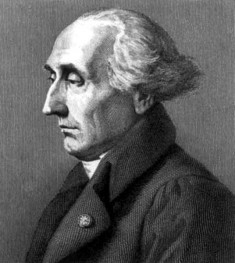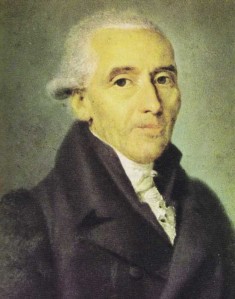The Italian Enlightenment helped establish several great thinkers. The mathematician and astronomer Joseph-Louis Lagrange (Giuseppe Luigi Lagrancia) was one of them. His contributions to math and the sciences were vast and much his work in researching helped create a foundation for others to build upon. He received many awards and commendations for his work while also serving as a teacher who helped guide others towards the learned path.
LaGrange’s Early Life
Joseph-Louis Lagrange was born on January 25, 1736, in Turin. He was of both French and Italian descent. Lagrange was born to a wealthy family and inherited a decent portion of his family’s wealth. However, he became involved in quite a number of speculative ventures and lost a great deal of his wealth as a result.
The formal education of Lagrange really was not one of any note. He did attend the college of Turin and never really became interested in mathematics until he reached the age of 17. Once his interest was piqued, he traveled down the path of being a very accomplished mathematician.
Over time, his expertise led him to becoming the director of mathematics at the Prussian Academy of Sciences. The discovery of this new interest in mathematics was one that emerged by accident. Lagrange had read a paper by Edmund Halley on the subject and then became so interested in it that he launched himself into a great deal of study. In a very short time, he would go on and become a very skilled and visionary mathematician.
LaGrange’s Accomplishments
The accomplishments of Joseph-Louis Lagrange were not reflected by his ability to simply perform high-level mathematics work. His achievements were notable through the many innovations he would bring forth. One area where he was particularly successful was in the realm of variational calculus. In 1754, he began work on the isochrone curve problem, which entails topics related to time, friction, and gravity. The work he performed in this area was remarkable and it eventually led Lagrange to becoming recognized as one of the founders of variational calculus.
The work performed by Lagrange in areas related to mathematics was vast. Analytical geometry, number theory, quadratic forms, and various other facets of algebra were among the areas he would invest time in.
Work in Astronomy
 Many incorrectly consider Joseph-Louis Lagrange to mainly be a mathematician. He was actually very accomplished in the field of astronomy as evidenced in the body of work he completed.
Many incorrectly consider Joseph-Louis Lagrange to mainly be a mathematician. He was actually very accomplished in the field of astronomy as evidenced in the body of work he completed.
What would eventually be known as the Langranian points originated out of a problem solving endeavor centering on the three-body problem. Through the problem-solving process, he made the discovery of two constant-pattern solutions: the equilateral and the collinear.
He also wrote paper about the moon. In particular, he delved into the topic of the secular equation of the moon. The paper he had written was extremely complex and highly detailed and well thought out. Various themes covered in the paper revolved around examinations of mass, distance, and attraction in varied directions. The material in this paper would continue to be built upon for many years.
Other papers would examine the orbits of comets and planets as well as the elements of planets and their relationship to secular and periodic variations. Three papers were written on the subject of the method of interpolation. Some of the material in these three papers has not been built upon since Lagrange originally wrote the material.
His greatest published work is widely considered to be the Mécanique Analytique, which dealt with the law of virtual work and how one fundamental principle aids in figuring out the entirety of the mechanics of solids and fluids.
Later Years
Joseph-Louis Lagrange became a citizen of France. In the late 18th century, there was a great deal of political upheaval in the nation. Lagrange did have concerns about his safety. He remained in France and this turned out to be a good decision as he was awarded several honors for his scholarly work.
In 1810, he began work on a newly updated version of the Mécanique Analytique. However, he would never be able to finish his material as he passed away on April 10, 1813.
